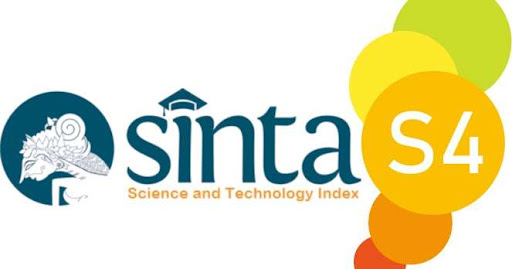Analysis of the Impact of Solar Radiation on the Battery Charging Duration and Operation of a DC Solar-Powered Water Pump
DOI:
https://doi.org/10.51747/energy.v15i2.15204Keywords:
Battery Charging, Efficiency, Solar Irradiance, Solar Water PumpAbstract
This research examines the effect of solar irradiance on the performance of a solar-powered water pump (SWP). The primary objective is to determine how solar irradiance affects battery charging time and pump operational duration. Using a system consisting of a solar panel, a battery, and a pump in the Malang region, we collected data on both sunny and cloudy days. The results indicate that solar irradiance is a crucial determinant of the system's efficiency. On sunny days, battery charging is faster, and the pump can operate for a longer period. Conversely, on cloudy days, battery charging slows down, and the pump's duration becomes shorter. This study concludes that solar irradiance is a key factor in optimizing SWP systems, and the use of a battery is essential to ensure stable operation.
References
[1] H. Timotius, J. Welman Simatupang, M. Andriani, P. Situmeang, I. Ramos SM, and M. Fauzi, “Analisis Potensi Energi Matahari Menjadi Energi Listrik Di Indonesia: Proyeksi Dan Peramalan Kapasitas Terpasang Plts Dengan Metode Double Exponential Smoothing,” TESLA J. Tek. Elektro, vol. 25, no. 2, pp. 183–195, 2023, doi: 10.24912/tesla.v25i2.25831.
[2] R. Rezky Ramadhana, M. M. Iqbal, A. Hafid, and J. Teknik Elektro, “ANALISIS PLTS ON GRID,” vol. 14, no. 1, 2022.
[3] A. I. Ramadhan, E. Diniardi, and S. H. Mukti, “Analisis Desain Sistem Pembangkit Listrik Tenaga Surya Kapasitas 50 WP,” Tek. Vol 37, No 2 (Desember 2016)DO - 10.14710/jis.%v.%i.%Y.82-90 , Dec. 2016, [Online]. Available: https://ejournal.undip.ac.id/index.php/teknik/article/view/9011
[4] M. T. Fathaddin, “Perancangan Ulang Progressive Cavity Pump dalam Upaya Peningkatan Laju Alir Sumur DA-01 pada Lapangan DLA Progressive Cavity Pump Redesign in an Effort to Increase the Flow Rate of,” 2023, doi: 10.36601/jurnal-migasian.v6i2.208.
[5] M. Raqhil, H. Vizar, T. A. Adlie, and M. Amin, “THE EFFECT OF LIGHT RADIATION ON SOLAR PANELS AND BATTERIES ( INDOOR AND OUTDOOR EXPERIMENTAL STUDY ),” 2025, doi: 10.55377/jurutera.v12i02.12099.
[6] H. A. S, “Studi Pemanfaatan Energi Matahari Sebagai Sumber Energi Alternatif Terbarukan Berbasis Sel Fotovoltaik Untuk Mengatasi Kebutuhan Listrik Rumah Sederhana Di Daerah Terpencil,” Al-Jazari J. Ilm. Tek. Mesin, vol. 3, no. 2, 2018, doi: 10.31602/al-jazari.v3i2.1624.
[7] A. Y. Salile, S. Nisworo, and S. Sumardi, “Analisis Fluktuasi Radiasi Matahari dan Implikasinya Terhadap Penempatan PLTS,” J. Profesi Ins. Indones., vol. 2, no. 6, pp. 354–358, 2024, [Online]. Available: https://ejournal2.undip.ac.id/index.php/jpii/article/view/24596
[8] Yassir, Zamzami, Zulfikar, M. Basyir, and Eliyani, “Optimasi Sudut Penyimpangan Panel Surya Terhadap Garis Lintang dengan Metode Algoritma Genetika, Studi Kasus: Kampus Politeknik Negeri Lhokseumawe,” Proceeding Semin. Nas. Politek. Negeri Lhokseumawe, vol. 3, no. 1, pp. 52–55, 2019.
[9] PT. PLN (Persero), SPLN D5.005: 2012.PANDUAN UMUM SISTEM PEMBANGKIT LISTRIK TENAGA SURYA. Jakarta Selatan, 2012. Accessed: Nov. 29, 2024. [Online]. Available: https://www.coursehero.com/file/46427327/37-SPLN-D5005-2012-NP-PLTSpdf/
[10] M. Nizar Habibi, M. Imron Dwi Prasetyo, N. Ayub Windarko, D. Septi Yanaratri, and P. Elektronika Negeri Surabaya, “Estimasi State of Charge (SOC) Pada Baterai Lithium-Ion Menggunakan Feed-Forward Backpropagation Neural Network Dua Tingkat,” 2020.
[11] I. Winarno, L. Natasari, J. Teknik Elektro, U. Hang Tuah Surabaya Jalan Arief Rachman Hakim No, K. Sby, and J. Timur, “MAXIMUM POWER POINT TRACKER (MPPT) BERDASARKAN METODE PERTURB AND OBSERVE DENGAN SISTEM TRACKING PANEL SURYA SINGLE AXIS,” 2017.
[12] B. P. Statistika, “Rata Rata Harian Penyinaran Matahari di Kota Malang (Persen), 2023,” Rata Rata Harian Penyinaran Matahari di Kota Malang (Persen), 2023. [Online]. Available: https://malangkota.bps.go.id/id/statistics-table/2/NTA2IzI=/rata-rata-harian-penyinaran-matahari-di-kota-malang.html
[13] Y. Sianturi, “Pengukuran dan Analisa Data Radiasi Matahari di Stasiun Klimatologi Muaro Jambi,” Megasains, vol. 12, no. 1, pp. 40–47, 2021, doi: 10.46824/megasains.v12i1.45.
[14] S. Yuliananda, G. Sarya, and R. Retno Hastijanti, “Pengaruh Perubahan Intensitas Matahari Terhadap Daya Keluaran Panel Surya,” J. Pengabdi. LPPM Untag Surabaya Nop., vol. 01, no. 02, pp. 193–202, 2015.
[15] E. Wahyuni, H. Mubarok, and A. N. A. Setyani, “Perancangan Teknologi Mesin Pompa Air Berbasis Panel Surya Untuk Kemandirian Listrik Skala Rumah Tangga,” J. Abdimas Madani dan Lestari, vol. 05, no. September, pp. 80–94, 2023, doi: 10.20885/jamali.vol5.iss2.art1.
Downloads
Published
Issue
Section
License
Copyright (c) 2025 ENERGY: JURNAL ILMIAH ILMU-ILMU TEKNIK

This work is licensed under a Creative Commons Attribution-NonCommercial 4.0 International License.














